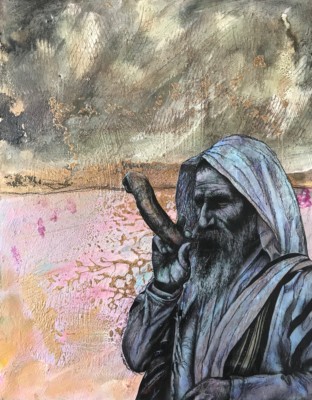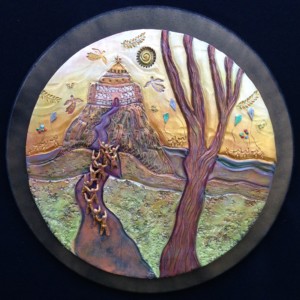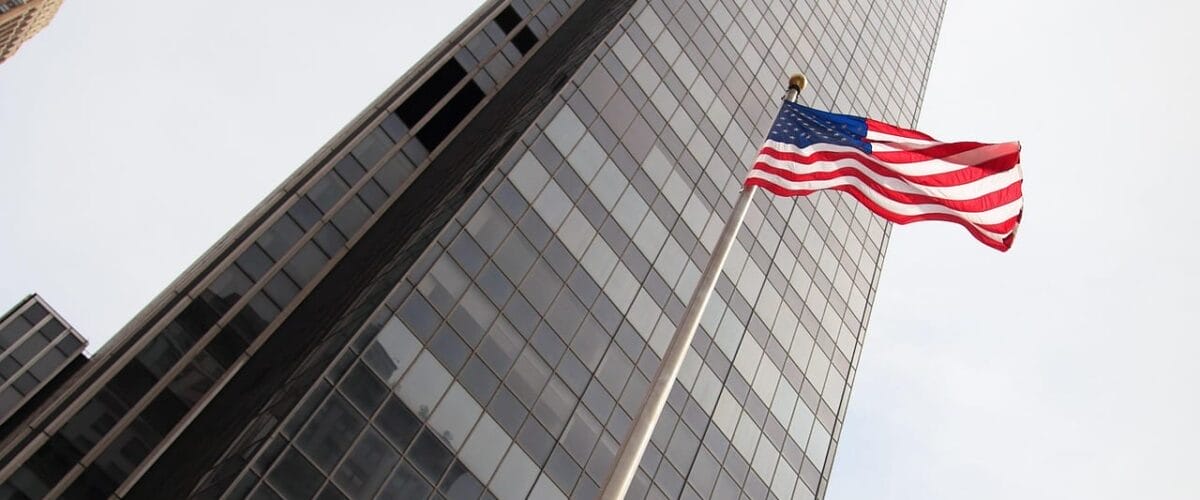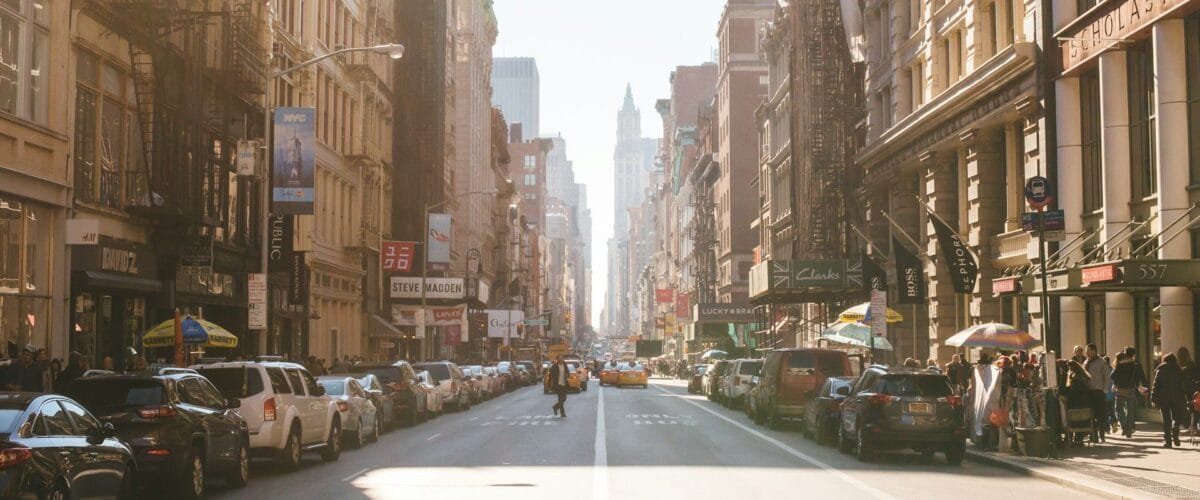THE POWER OF FAILURE: PART ONE
Question: How does art get done? Why does it often NOT get done? What is the nature of the difficulties that stop so many who start?
In past epochs, art was in the service of God in some measure. 90% of all art was religious in nature until the 1700s. By religious, I mean dedicated and used to honor or appease the gods; whether it was a Greek Zeus or an Egyptian Pharaoh or a pre-historic cave painter appealing to the god of the hunt, they all were attached to some sort of belief system that involved beings greater than themselves. From about 315 A.D. when Emperor Constantine made Christianity the ‘official’ religion of his empire, the church backed and often controlled the artist, but the artist’s PURPOSE was secure. Then things changed as the world became more secularized, and by the 20th century, almost no significant art was religious. Today, making art means working in the face of uncertainty, living with doubts and contradiction. Realizing that most people don’t care whether you make art or not, we often lack both audience and reward.
Art is made by ordinary people who have worked years to master their craft. This means we all have flaws and weaknesses which seem like obstacles but, in reality, are a source of strength and are part of our uniqueness. Art is most often about overcoming things and solving difficult problems. These struggles actually inform us about ourselves. To all viewers but yourself, what matters is the product, the finished work. To YOU, what matters is the PROCESS. The viewers’ concerns are not YOUR concerns. Your job is to learn to work on your craft. We discover ourselves during those moments. As Picasso once said, art for him was just another way of keeping a journal. In a way, we lose ourselves in the process so that we may find our true selves. The best we can do is make art that WE care about—and lots of it! Until your ship comes in, the only people who will care about your work are those who care about you personally.
The clay sculptor Stephen DeStaebler once said, “Artists don’t get down to work until the pain of working is exceeded by the pain of NOT working.” Most artists who begin, quit. Those who continue to make art are those who have learned how NOT to quit. The Regionalist artist Thomas Hart Benton said, “The only way an artist can fail is to stop working.”
ART AND FEAR
Artists quit working when they convince themselves that their next effort is doomed to fail. Artists quit when they lose the destination for their work—the meaning in their work. Fear that your next work will fail is normal. This is sometimes called the “Jonah complex,” life in the belly of the whale. It often deals with the loss of energy or loss of vision/purpose. But ‘stopping’ is not the same as ‘quitting.’ Stopping happens all the time, quitting only once. Sometimes, when we reach our goal (success), we don’t know what to do for an encore. When this happens to some, they never produce again. To avoid this, don’t let your current goal be your only goal.
Let me give you an example. For art students, their destination is graduation. How many art majors, after graduation, never produce again? Is this true of medical students? Not many people continue making art when their art is no longer seen, no longer exhibited, no longer commented on, nor encouraged. The REAL KILLER here is the lack of any continued support system. The American artist Thomas Eakins is a prime example of this. Arguably America’s greatest realist, the lack of support or interest in his groundbreaking type of realism caused him to simply fade away through discouragement.
Your desire to make art is integral to the sense of who you are. Making art can feel dangerous and revealing and often stirs up self-doubt. “I’m not an artist,” “I have nothing worth saying,” “I’m not sure what I’m doing,” “Others are better than I am,” “I’m only a student/mother/waiter/whatever,” “I’ve never had a real exhibit,” “No one understands my work,” “No one likes my work,” “I’m no good,” fill in the blank. But note that these fears have less to do with the art than they do with the artist. What separates artists from ex-artists is that those who challenge their fears, continue; those who don’t, quit. The artist Judy Chicago said, “Amateurs paint when they feel like it; professionals paint whether they feel like it or not.”
Making art is chancy. It doesn’t mix well with predictability. Uncertainty is essential, and tolerance of uncertainty is the pre-requisite for succeeding.

FEARS ABOUT YOURSELF
Fears about art-making fall into two categories: 1. Fears about yourself and 2. Fears about your reception by others that prevent you from doing your own work. It is easy to imagine that ‘real’ artists know what they are doing and that you are not a real artist which causes you to undervalue your work. But you should note that you make good work by making lots of work that isn’t very good and then weeding out those that don’t make the cut. Ansel Adams, the photographer, would keep one picture out of 1,000. In evaluating your work, allow some time to go by before judging what you’ve made. Fresh work is like giving birth to a baby. To the mother who has gone through labor, ALL her babies are beautiful. Then they turn into teenagers, and you get another perspective. The artist Titian would paint a canvas and then turn it to the wall for a year. When he looked at the work after a year, he would immediately know if it was worthy or needed to be changed. Time gave him fresh eyes away from the ‘pain’ of artistic birth.
I would like to relate a few thoughts about talent. Talent is that which comes easily. Note that talent may get someone off the starting blocks faster, but without a sense of direction or purpose, it won’t count for much. The world is full of people who were given great natural gifts yet never produced much. Artists get better by sharpening their skills and acquiring new ones. Without motivation and desire, talent doesn’t count for much, and can, in fact, become a snare and a delusion. Neither Vincent Van Gogh nor Paul Cezanne had natural talents. They worked hard for every yard they gained. Yet they are now viewed as two of the greatest modern artists.
I have a few thoughts on perfectionism as well. Perfectionism is a creativity killer. Because it is impossible to be perfect, the perfectionist uses that excuse to justify their failings, thus guaranteeing their failure. What IS a perfect painting, anyway? Ansel Adams said, ‘The perfect is the enemy of the good. To invite perfection is to invite paralysis–in not working.” The actor Michael J. Fox said, “Perfection is God’s business. Excellence is mine.” So we can strive for excellence which only comes through working hard at our craft and is a constantly moving target. But perfectionism? Forget it!
In closing this first part on the power of failure, I leave you with two choices: 1. Give your work your best shot and risk that it will not make you happy, or 2. Don’t give it your best shot and guarantee that you won’t be happy. Uncertainty is the better choice.
In my next entry on failure, I will show you how to make failure work for you. Until then, thanks for reading.
Featured and In-Text Image Painted by Gary Wilson















Comments are closed.